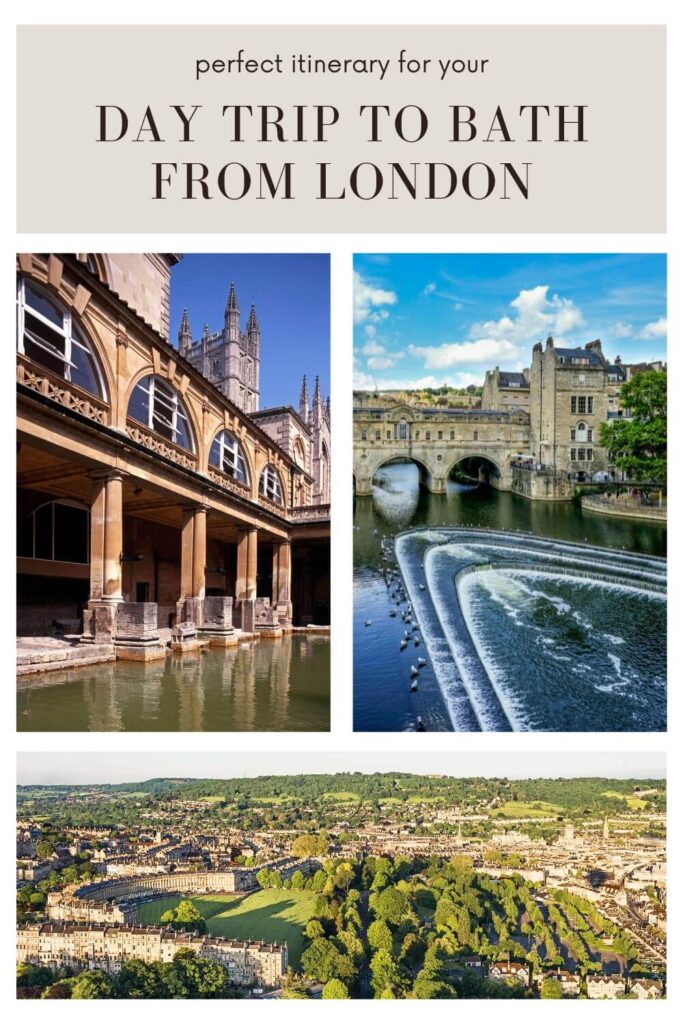The lovely World Heritage City of Bath, in south west England is a hugely popular destination. With gorgeous Georgian architecture, ancient Roman baths and the UK’s only natural hot springs to relax in, the beautiful city of Bath is an easy day trip from London.
Here’s my favourite itinerary for the perfect day trip to Bath, with timings, things to do in Bath and tips for your visit.
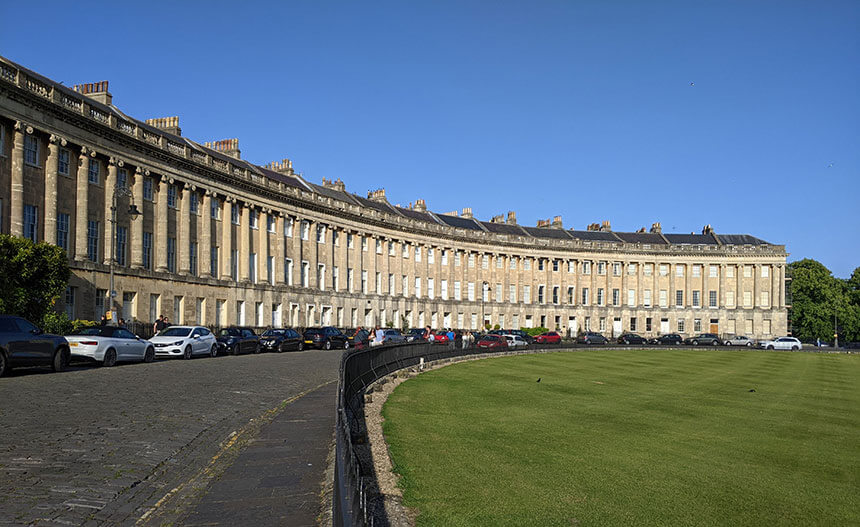
Getting to Bath
Many visitors taking a day tour to Bath from central London visit Bath as part of a guided tour which also stops at Windsor Castle and Stonehenge. Any chance to see Bath is one worth taking, but I loved Bath so much that I think it’d be a shame not to spend a full day there to take in all the best things to do in this historic city.
By following this Bath day trip itinerary, you’ll be able to see all the main attractions at your own pace, with some extra relaxation built in!
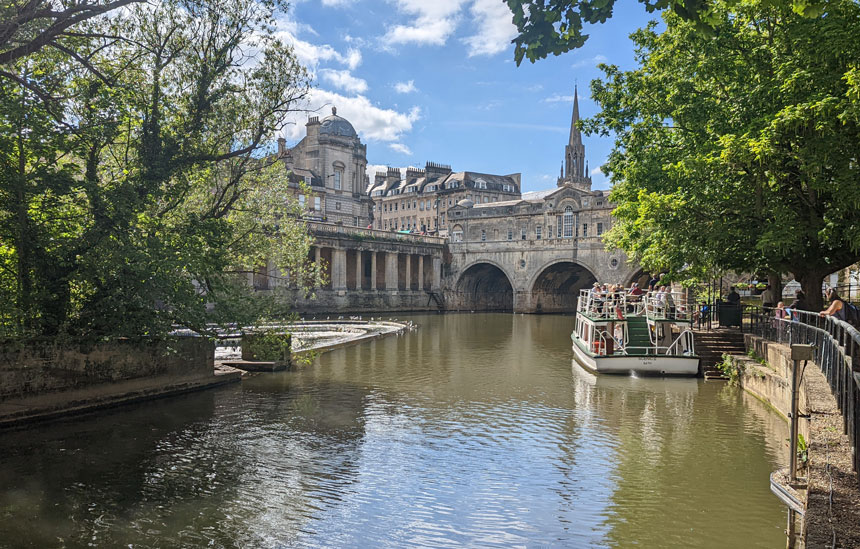
From London
If you’re taking a day trip to Bath from London, then by far the best way to get there is by train. Great Western Trains run frequently between London Paddington station and Bath Spa train station; expect travel time from central London of around 1 hour 20 minutes. As with all fairly long distance trains in the UK you should book your ticket as far in advance as you can (you can do this online) to get the cheapest ticket price.
From Bristol
It’s really easy to take a day trip to Bath from Bristol. Trains to Bath Spa station from Bristol Temple Meads take just 11 minutes and run every 10 to 20 minutes throughout the day. You don’t need to book train tickets for this local route in advance.
However you travel to Bath, aim to be in the city before 9am for the first stop on this Bath day trip itinerary. It might mean an early start, but things are about to get a whole lot more relaxing!
9am: Enjoy a thermal bath at Thermae Bath Spa
The first stop of the day on your day trip to Bath should be the city’s most indulgent attraction, the Thermae Bath Spa. Bath is the only place in Britain with naturally hot springs, and the reason for the city’s existence.
The Romans enjoyed taking thermal baths here, and visitors can too. While you can’t bathe in the famous Roman Baths, you can enjoy the naturally hot, mineral-rich waters at Thermae.
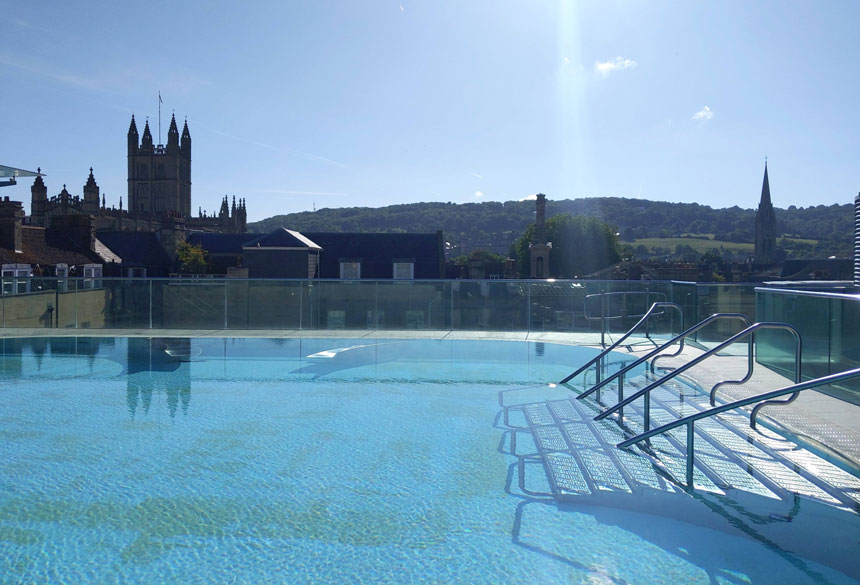
Thermae’s major attraction is its rooftop pool with lovely views towards Bath Abbey and the rolling Somerset hills that surround the city. The water comes from Bath’s three hot springs; it emerges from the ground at 45 ºC (113 º Fahrenheit) but is cooled to 34 ºC (93 º Fahrenheit) so it’s comfortable for bathing.
As well as the outdoor pool, there’s also a large indoor pool with a whirlpool and lazy river.
A wellness centre (included in the ticket price) has two fragrant steam rooms, an infra red room, a space-themed relaxation room and an ice chamber where you can rub yourself down with cooling and exfoliating ice crystals.
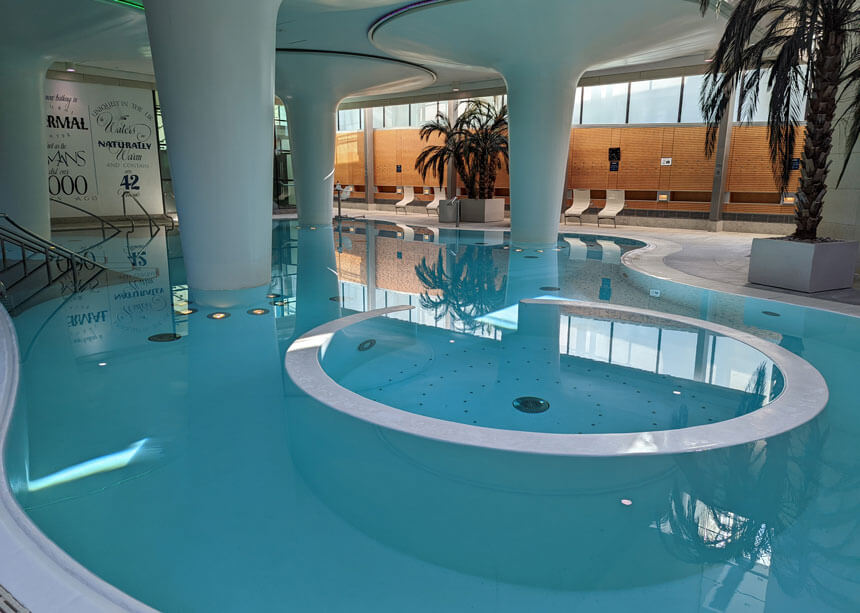
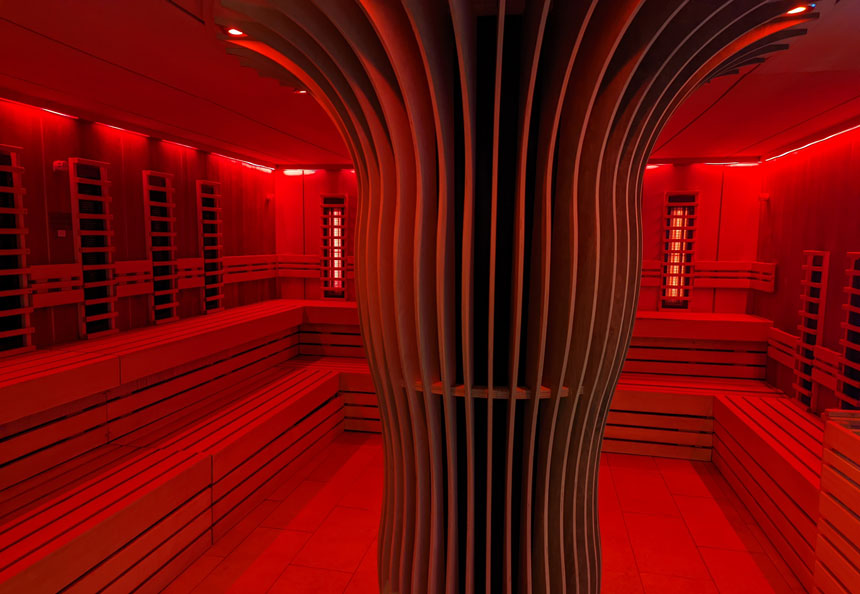
Thermae opens at 9am, 7 days a week, and the best time to visit is either when it opens or late into the afternoon/evening as it gets very busy as the day goes on – you don’t want to spend your precious day trip time queuing!
Getting there when it opens also means it’s as quiet as it can be – when I visited at 9am on a Monday morning in June there were around 18 of us in the rooftop pool which was a very comfortable amount, and for quite a while there was just the two of us in the large indoor bath.
Towels, robes and flip flops are included in the Thermae entry price, so if you’re taking a day trip to Bath from London by train then the good news is that all you have to bring is your bathing suit and whatever toiletries you need. If you’re hungry during your visit, there’s a cafe inside.
Read more: Tips for your visit to Thermae Bath Spa
11am: Visit the Roman Baths
The Roman Baths are absolutely incredible and surprisingly large, so I’ve allowed 2 hours for your visit. I’d thought that all there was to see was the big pool, but there’s an awful lot more to it than that.
The entry price of £25 for adults seems pretty steep (especially if you’re expecting a quick look at a murky green pond) but it’s an unmissable part of any day trip to Bath.
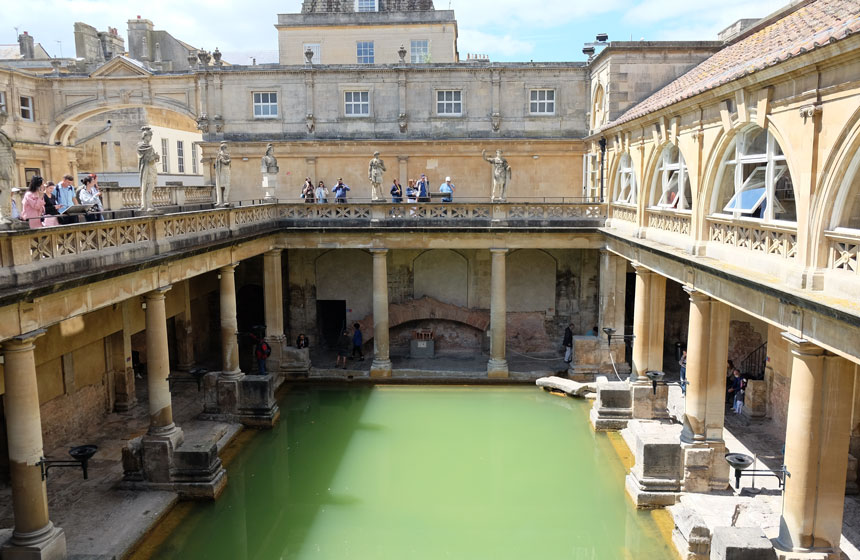
You’ll enter the Roman Baths from the Abbey Churchyard – there wasn’t a queue when I visited but you can book tickets online if you like. The entry price includes the audio tour, with a choice of commentaries and languages including an option for children. As soon as you walk in, you see the large pool, which is fantastically well preserved.
You’ll walk around the 19th century platform with statues of Roman emperors, then go down to the museum, which shows how large the bathing complex was in Roman times.
There are displays of Roman coins and other treasures found in the ruins, but I particularly enjoyed the displays of curse tablets – little pieces of metal inscribed with complaints to the goddess Minerva about someone who’d wronged the writer. Curse tablets were popular throughout the Roman world – the ones found in Bath tend to be requests for revenge for the theft of a cloak or money taken while the owner was bathing.
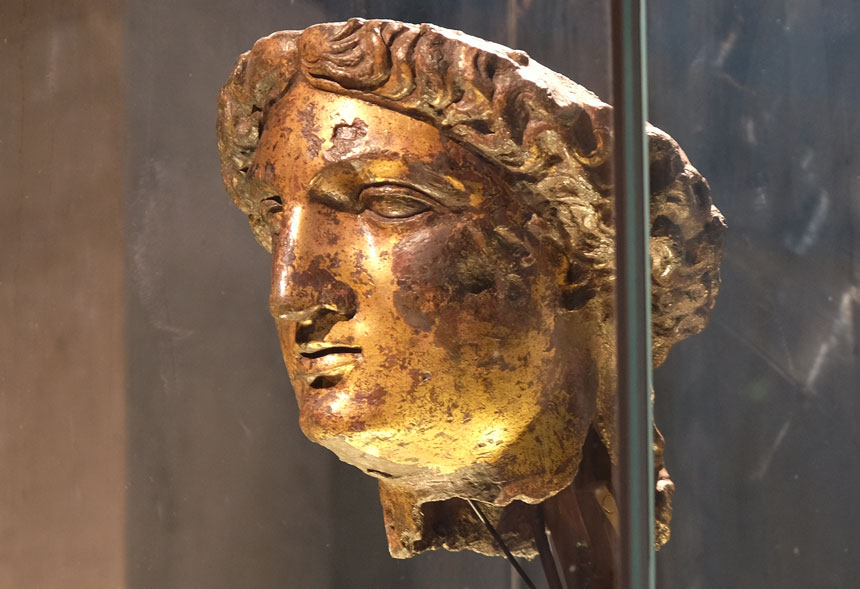
The next section of the museum is the remains of the Roman temple dedicated to the goddess Minerva, who the Romans who came to Bath merged with the Celtic goddess Sulis to give Bath its Roman name Aquae Sulis (the waters of Sulis). One of the most precious artefacts in the collection is a stunning gilt bronze head of Sulis Minerva which was found on the site in 1727.
From the temple, you’ll go outside to see the Roman Baths at their original level, far beneath modern street level. The water is a murky green and doesn’t look terribly inviting, but walking in the footsteps of Romans is incredibly moving and atmospheric – I got the same kind of feeling as I did when I visited Pompeii.
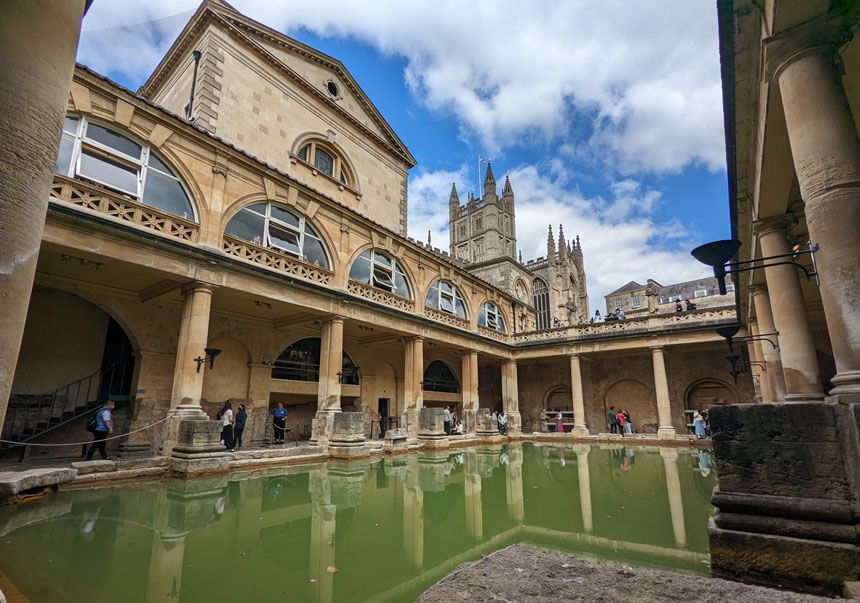
It’d be easy to miss the rooms off the side of the pool but they’re really worth a look. The audio guide gets really interesting here as it talks about the everyday life of the Romans who came here, and the videos that are projected into each room are really well done.
Towards the way out, you can see the hot spring water running into the Roman bath underneath your feet. There’s a drinking fountain where you can taste the waters, or you can save that particular Bath treat for later when you visit the Pump Rooms.
1pm: Lunch
Stay in Bath’s historic centre and keep it fairly light as you’ll be going for afternoon tea soon!
You could visit Sally Lunn’s Historic Eating House, which is in one of the oldest houses in Bath and serves up a range of sandwiches made with their famous Sally Lunn’s Bunns which they claim are the original Bath bun).
If that doesn’t appeal, or the queue is too long, there are lots of other options. I particularly liked the Scandi-style cafe Mjölk‘s sandwiches for lunch – you can find them opposite the Pump Room and Roman Baths in the Abbey Churchyard.
2pm: Free guided walking tour
The Mayor of Bath’s Corps of Honorary Guides run free, 2 hour-long walking tours of Bath, taking in all Bath’s most popular sights like the Royal Crescent, the Circus, the Assembly Rooms, Bath Abbey and Pulteney Bridge. It’s a great way to understand the city, its history and its 18th century architecture in a very short time.
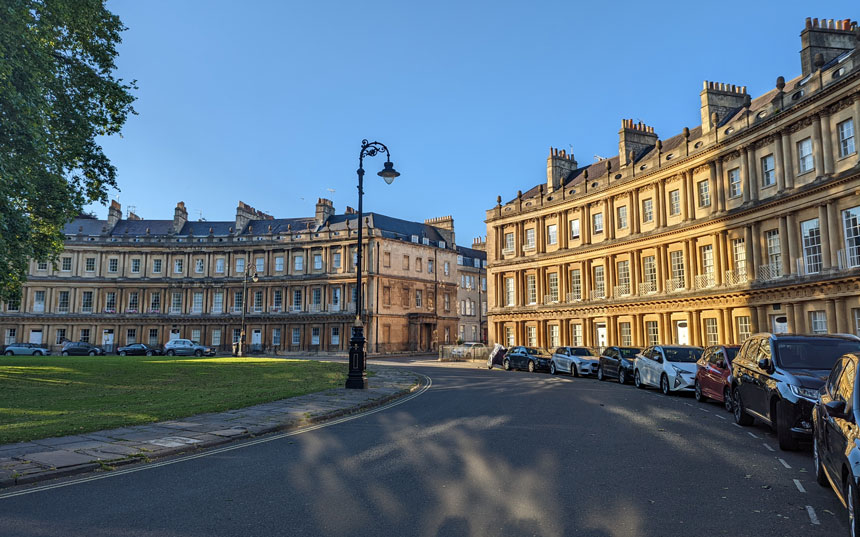
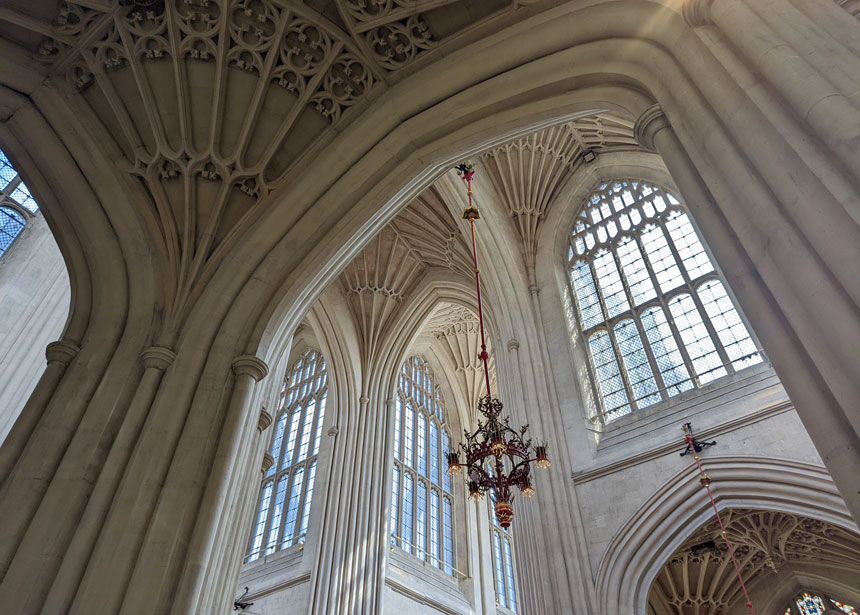
The guides themselves are a bit of a Bath institution – established in 1938, the volunteers have been showing visitors around the city for over 80 years. The knowledgeable guides don’t accept tips or gratuities so your tour is completely free.
4pm: Afternoon tea at the Pump Room
The Pump Room was a fashionable meeting place in Georgian times, and counted Jane Austen among its elegant, society visitors; it features in her novels Northanger Abbey and Persuasion. If you’re a Jane Austen fan, you could also use any free time to visit the Jane Austen Centre; it’s a small museum only a short walk from most other Bath attractions in the city centre.
The Pump Room takes its name from the pump that brings water from the King’s Spring up to a drinking fountain in the restaurant. You can “take the waters” here as the Georgians did – with over 42 minerals the water is reputed to have health benefits (they do taste nasty enough to be medicinal!). It also boasts its own musical ensemble who play as diners enjoy the refined surroundings.
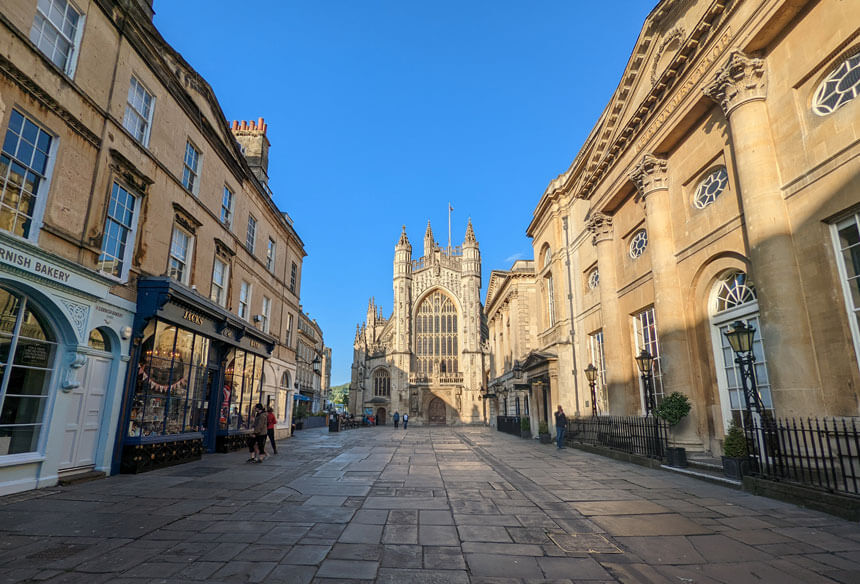
A Pump Room afternoon tea includes a selection of savoury sandwiches and tarts, scones and pastries and a pot of tea or coffee. If you’re in the mood for some more bubbles after Thermae this morning, you can add a glass (or bottle) of Champagne or English sparkling wine to give your afternoon tea some extra fizz.
5pm: Shopping
Bath has lots of fantastic independent shops, along with the usual British chains. Most of the big chains like Boots or Primark are open until 7pm Monday to Saturday.
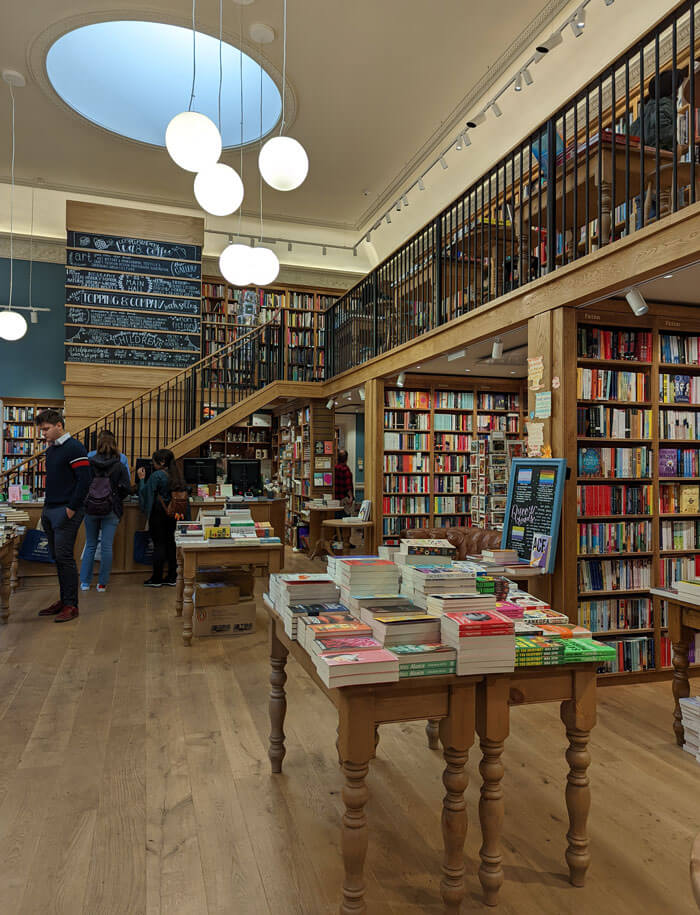
One of my favourite shops in Bath is the Topping & Company bookshop which is in a former chapel near the Abbey. It’s one of the UK’s largest independent bookshops and an absolute delight if you love books – the building is gorgeous, they stock over 45,000 titles and they run regular events with big-name authors. It’s well worth checking on their website to see who’s going to be in town at the same town as you.
7pm: Pizza and cocktails
By now you’ll be getting peckish again, so head for some laid-back but award-winning pizza and cocktails at Bath’s old Green Park railway station. The station still has its huge arched roof and hosts craft markets, farmers’ markets and antique markets. Even if you don’t stay for pizza, it’s worth a look for the old station’s huge arched roof.
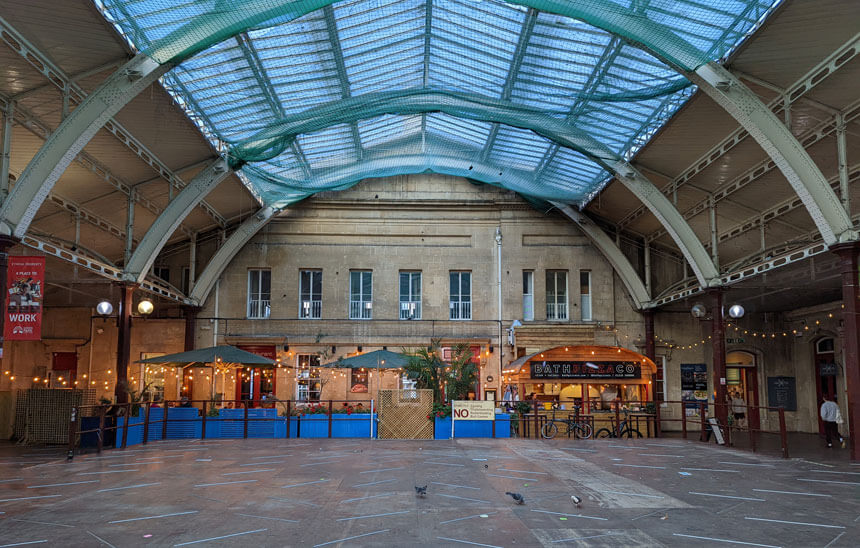
Bath in the evening
Regular trains back to London from Bath finish just after 9pm – there’s one last train after 10 but I’d aim to be on one of the earlier ones. The train times mean that a theatre show probably isn’t going to be an option but there are other things to do in Bath in the evening.
If you’re in the mood to see the darker side of Bath, you can take one of the ghost tours – some of which have audience participation!
Bath has a lively pub scene, ideal to round off your day trip to Bath. The Bath Brew House, just across the road from Green Park Station, has brewery tours most days at 6pm, a pub quiz on Tuesdays and live music from up-and-coming Bath acts on Sundays.
The Grapes, on Westgate Street, has been a pub since 1792 and hosts live music most nights, including jazz and Irish folk. There’s a stunning 17th-century Jacobean ceiling in the function room upstairs. The Bell Inn, on arty Walcot Street, has an eclectic lineup of live acts 3-4 times a week and is loved by music greats like Robert Plant and Peter Gabriel.
What would you do on a day trip to Bath?
Planning your own day trip to Bath from London? Pin it for later!
